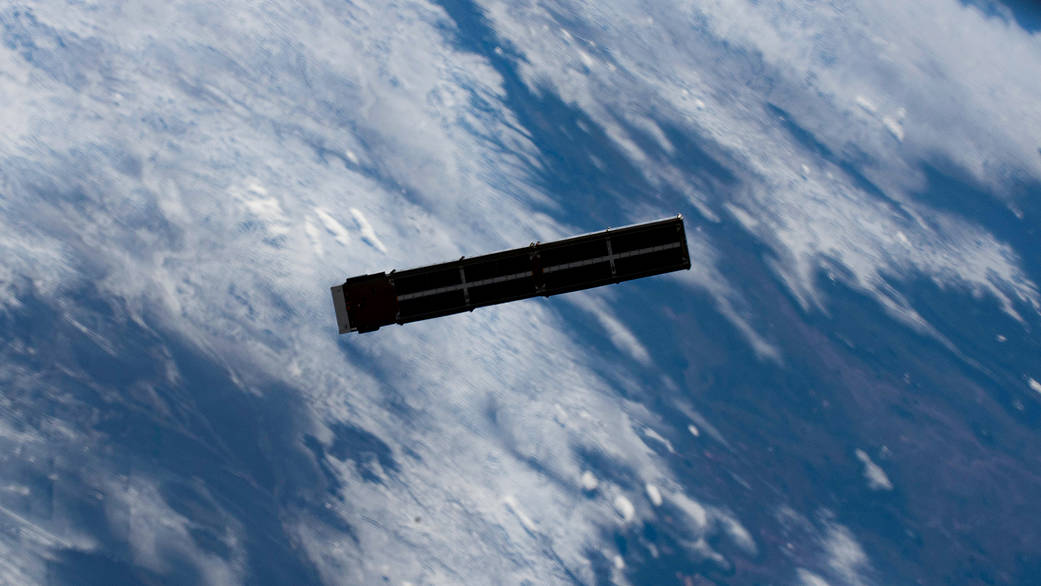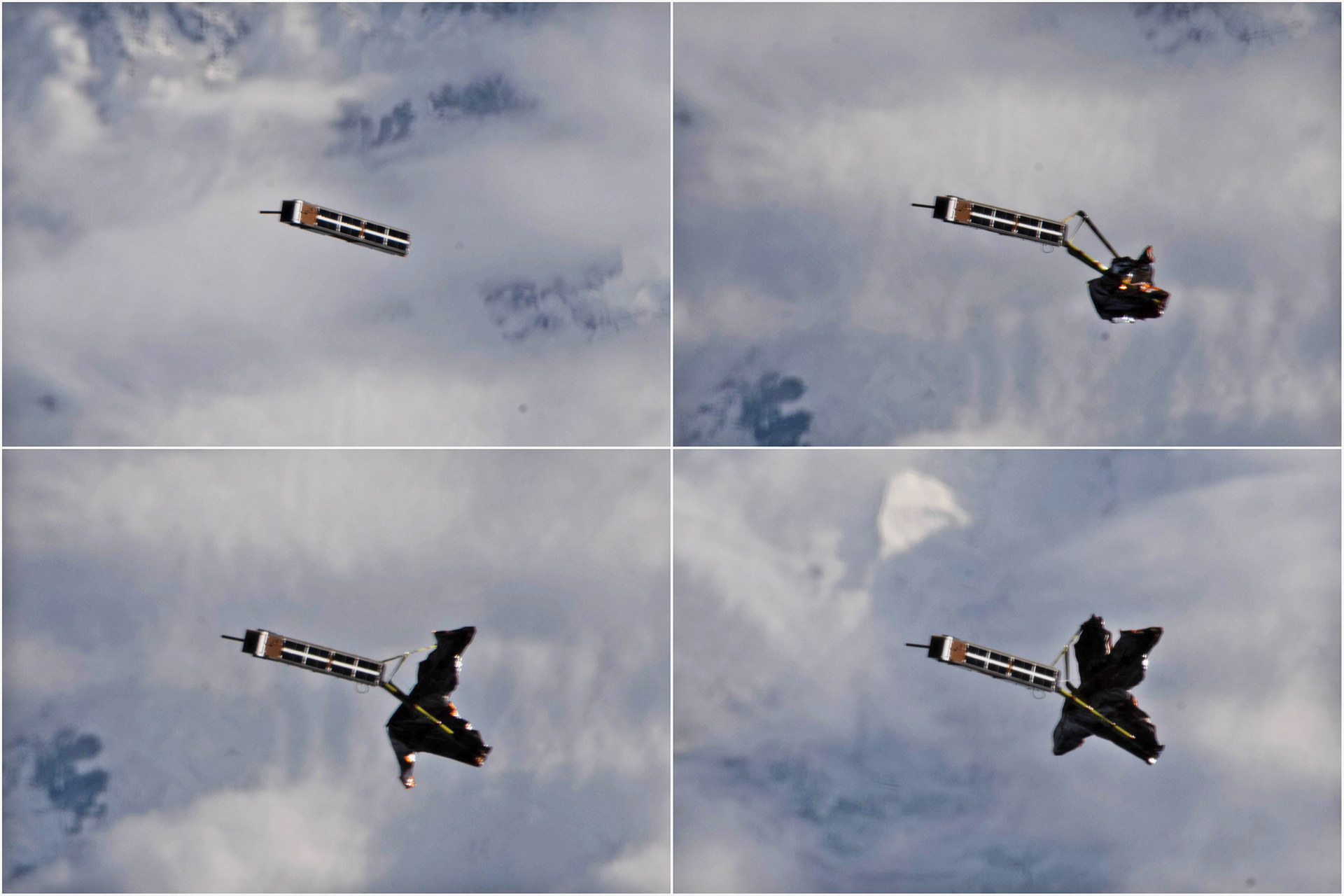On July 13, TechEdSat-10, a six-unit CubeSat deployed from the International Space Station. The mission is demonstrating increased storage and power capabilities that could enable future science and exploration using small spacecraft beyond low-Earth orbit. Included on TechEdSat-10 are improvements over previous CubeSat technologies in the areas of communications and radio systems, and new propulsion techniques.
As the tenth iteration in the Technology Educational Satellite series, TechEdSat-10 builds upon a history of the program’s innovative work with early career researchers, students, and volunteers.
TechEdSat-10 contains 150 watt-hours of power storage, eight radios, nine processors, and a graphics processing unit. Additionally, the small satellite carries four cameras, including a stereoscopic virtual reality camera experiment.
Like several TechEdSat missions before it, this mission is demonstrating the exo-brake technology in its largest iteration to date. The exo-brake is designed to deploy an umbrella-like “brake” to increase drag and take a small satellite out of orbit. This mission, the exo-brake can be controlled or modulated by commands from the ground in order to target a re-entry point. In the future, this could enable sample return missions from orbit and future planetary missions.
Small satellites, including CubeSats, provide a low-cost platform for scientific research, technology demonstrations, and educational investigations. NASA’s small satellite initiatives develop missions to observe Earth, study the Moon, and test advanced instruments like high-bandwidth laser communications and autonomous navigation. NASA also funds rideshare launch opportunities for small satellites, including student projects. With this increased access to space, students can gain hands-on experience in satellite development and operations.
Image Credit: NASA




























